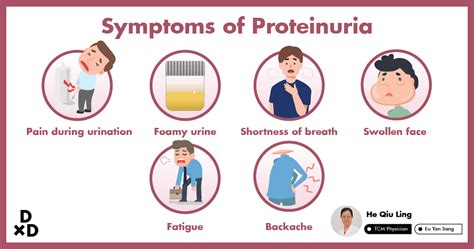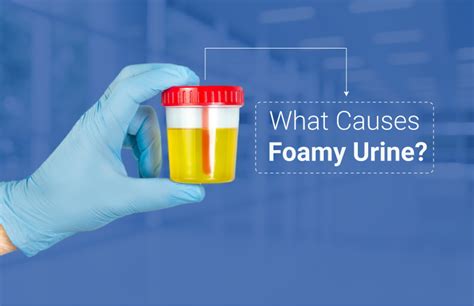Intro
Discover the causes and symptoms of foamy urine, a condition characterized by excess protein, kidney issues, and dehydration, affecting overall urinary health and kidney function.
Foamy urine can be a concerning symptom for many individuals, and it is essential to understand its definition and implications for our health. Urine is a liquid waste product that is produced by the kidneys and excreted through the urinary system. Normally, urine is a clear or pale yellow liquid, but in some cases, it can appear foamy or bubbly. This foamy appearance can be caused by a variety of factors, ranging from harmless to more serious underlying medical conditions.
The presence of foam in the urine can be an indication of an abnormality in the urinary system, and it is crucial to investigate the underlying cause to determine the best course of action. Foamy urine can be a symptom of various conditions, including kidney disease, urinary tract infections, and other disorders that affect the kidneys and urinary system. In some cases, foamy urine can be a sign of a more serious condition, such as kidney failure or nephrotic syndrome, which requires prompt medical attention.
Understanding the definition and causes of foamy urine is vital for individuals who are experiencing this symptom. By recognizing the signs and symptoms of foamy urine, individuals can take the necessary steps to seek medical attention and prevent further complications. In this article, we will delve into the world of foamy urine, exploring its definition, causes, symptoms, and treatment options. We will also discuss the importance of seeking medical attention and provide tips for maintaining good urinary health.
What is Foamy Urine?

Foamy urine is a condition characterized by the presence of excessive foam or bubbles in the urine. This can be caused by a variety of factors, including proteinuria, which is the presence of excess protein in the urine. Proteinuria can be a sign of kidney damage or disease, and it is essential to investigate the underlying cause to determine the best course of action. Other causes of foamy urine include urinary tract infections, kidney stones, and other disorders that affect the kidneys and urinary system.
Causes of Foamy Urine
The causes of foamy urine can be divided into two main categories: harmless and serious. Harmless causes of foamy urine include: * Excessive water intake * Consuming foods that are high in protein * Vigorous exercise * Dehydration Serious causes of foamy urine include: * Kidney disease * Urinary tract infections * Kidney stones * Nephrotic syndrome * Kidney failureSymptoms of Foamy Urine

The symptoms of foamy urine can vary depending on the underlying cause. Common symptoms include:
- Foamy or bubbly urine
- Cloudy or discolored urine
- Strong or unpleasant odor
- Pain or discomfort while urinating
- Frequent urination
- Blood in the urine
Diagnosis of Foamy Urine
Diagnosing foamy urine involves a combination of physical examination, medical history, and laboratory tests. The doctor may perform a physical examination to check for signs of kidney disease or other underlying conditions. The doctor may also ask questions about the individual's medical history, including any previous kidney problems or urinary tract infections. Laboratory tests, such as urinalysis and blood tests, may be ordered to check for signs of kidney disease or other underlying conditions.Treatment Options for Foamy Urine

The treatment options for foamy urine depend on the underlying cause. In some cases, foamy urine may resolve on its own without treatment. However, in other cases, treatment may be necessary to address the underlying condition. Treatment options may include:
- Medications to treat underlying conditions, such as kidney disease or urinary tract infections
- Lifestyle changes, such as increasing water intake or reducing protein consumption
- Dietary changes, such as following a low-protein diet
- Surgery, in some cases, to remove kidney stones or other blockages
Prevention of Foamy Urine
Preventing foamy urine involves maintaining good urinary health and addressing any underlying conditions. Tips for preventing foamy urine include: * Drinking plenty of water to stay hydrated * Eating a balanced diet that is low in protein * Avoiding foods that can irritate the kidneys, such as spicy or acidic foods * Getting regular exercise to maintain good overall health * Managing underlying conditions, such as kidney disease or diabetesComplications of Foamy Urine

If left untreated, foamy urine can lead to complications, such as:
- Kidney damage or disease
- Urinary tract infections
- Kidney stones
- Nephrotic syndrome
- Kidney failure
Seeking Medical Attention
It is essential to seek medical attention if you are experiencing foamy urine, especially if it is accompanied by other symptoms, such as pain or discomfort while urinating, frequent urination, or blood in the urine. A doctor can diagnose the underlying cause of foamy urine and provide treatment options to address the condition.Living with Foamy Urine

Living with foamy urine requires managing the underlying condition and making lifestyle changes to maintain good urinary health. This may involve following a low-protein diet, increasing water intake, and getting regular exercise. It is also essential to seek medical attention if symptoms persist or worsen over time.
Coping with Foamy Urine
Coping with foamy urine involves managing the emotional and psychological aspects of the condition. This may involve seeking support from family and friends, joining a support group, or talking to a therapist. It is also essential to stay informed about the condition and to ask questions if you have concerns.Future Directions

Future directions for foamy urine involve ongoing research and development of new treatments and therapies. This may include the use of new medications or surgical procedures to address the underlying condition. It is also essential to continue to raise awareness about foamy urine and to educate individuals about the importance of seeking medical attention if symptoms persist or worsen over time.
Conclusion and Final Thoughts
In conclusion, foamy urine is a condition that requires attention and care. By understanding the definition, causes, symptoms, and treatment options, individuals can take the necessary steps to manage the condition and maintain good urinary health. It is essential to seek medical attention if symptoms persist or worsen over time and to stay informed about the condition. By working together, we can raise awareness about foamy urine and improve the lives of individuals who are affected by this condition.What is the main cause of foamy urine?
+The main cause of foamy urine is the presence of excess protein in the urine, which can be a sign of kidney damage or disease.
How is foamy urine diagnosed?
+Foamy urine is diagnosed through a combination of physical examination, medical history, and laboratory tests, such as urinalysis and blood tests.
What are the treatment options for foamy urine?
+The treatment options for foamy urine depend on the underlying cause and may include medications, lifestyle changes, dietary changes, and surgery.
We hope that this article has provided you with a comprehensive understanding of foamy urine and its implications for your health. If you have any further questions or concerns, please do not hesitate to comment below or share this article with others. By working together, we can raise awareness about foamy urine and improve the lives of individuals who are affected by this condition.
